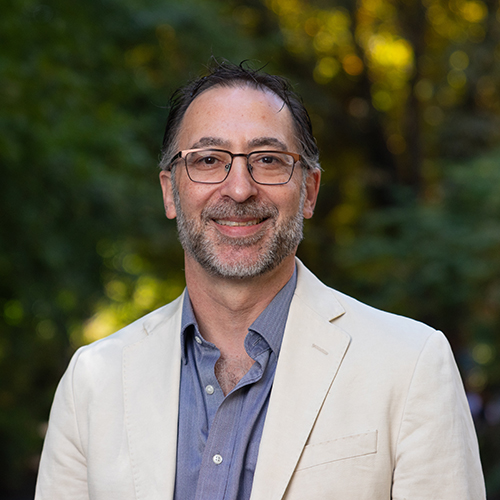If you ask a physicist what happens at the Institute for Nuclear Theory (INT), be prepared for a physics analogy. “In nuclear physics, we collide nuclei together to learn more about them,” says newly appointed INT Director David Kaplan. “At the INT we collide theorists together and see where they end up.”
Not literally, of course.
At the INT, top scientists from around the world gather to discuss and collaborate on questions at the cutting edge of nuclear theory. The national institute was created in 1990 by the U.S. Department of Energy.

The UW, one of five institutions that competed for the institute, was “a bit of a dark horse,” says Wick Haxton, INT’s director through August 2006. “But I think we emphasized the right things. We pushed very hard for the notion that this should be a visitors center rather than an ivory tower with a large permanent staff. We emphasized training young scientists and encouraging the intersection of nuclear physics with other fields. All of this resonated with the committee. They wanted something that would stretch the field and open up new horizons. That was our view as well.”
The INT has continued to be true to its early vision. The institute offers four major programs and typically three to five shorter workshops annually, each focusing on a different research question. Scientists from around the world—as many as 300 each year—visit for up to three months to explore a topic in depth.
“The field of nuclear physics has folks scattered all over, at various universities and labs, alone or in small groups,” says Haxton. “We wanted a facility where scientists in a given subfield can get together to discuss new problems, throw ideas off the wall, find out which ones are good, get recharged, and return home with new collaborations and new ideas. It’s worked quite well.”
Some INT programs have inspired new research directions. Haxton offers the example of a recent workshop on new stars—the very first stars that emerged as protons and helium atoms in the early universe began to condense.
“As the earliest galaxies formed, unusual massive stars formed and began to produce light,” says Haxton. “Very few nuclear theorists have been thinking about how these stars evolved. So we brought together some of the best people in astrophysics and cosmology with some of the best people in nuclear physics to discuss the problem. A lot of nuclear physicists went away thinking, ‘This is a very interesting new area, and we should start working with our astrophysicist colleagues, as we can make a contribution.’”
A few lucky postdocs and five-year fellows, just beginning their scientific careers, get to be part of these “collisions” of top scientists. As part of the INT’s mission of training young scientists, the institute typically funds three postdocs and two five-year fellows at any given time.
“This is kind of a dream job for a young person,” admits Haxton. “Our postdocs, over the course of their two or three years here, see all kinds of physics and meet lots of people. It’s kind of like drinking from a hose—there’s so much going on—but they really do get a great introduction to what the field is all about.”
The INT also helps administer a summer school for graduate students in nuclear physics and runs an NSF-funded Research Experiences for Undergraduates program in partnership with the UW Department of Physics.
After many years at the helm of the INT, Haxton was ready to hand the reins to
Kaplan in September. Kaplan, an INT faculty member since 1994, plans to continue the institute’s successful programs and pursue some new projects, including adding more advanced computing facilities.
“The model for computational nuclear physics now is that you submit proposals for time on supercomputers at national labs, competing with scientists in all different fields,” explains Kaplan. “I’d like the INT to have a more modest computer—one that would have been considered a supercomputer several years ago—dedicated to addressing several outstanding problems in nuclear structure.”
The future of the INT continues to look bright—and full of productive
collisions.
More Stories

The Public Impact of Private Cities
Geography major Edwin Bai has researched private cities, developed by individuals and corporations, that "take the libertarian idea of low government regulation to the maximum."

The Curious Journey of Chinese Characters
Several Asian countries adapted the Chinese writing system—the oldest writing system still in use—for their own languages. In a new book, Professor Zev Handel shares how that happened.

Demystifying Quantum
In a physics course for non-STEM majors, Professor Miguel Morales teaches quantum mechanics without the advanced mathematics most quantum courses require.